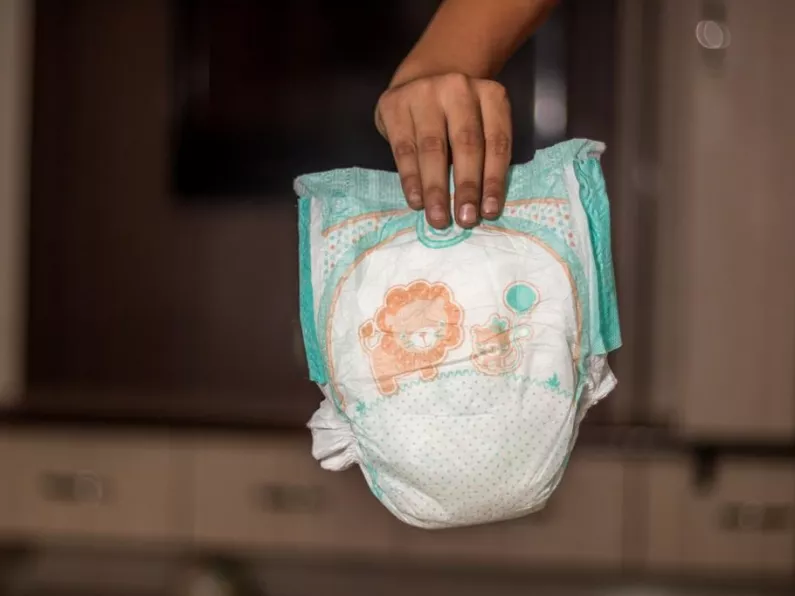Baby poop is something you're naturally expecting as a new mom. But maybe you had no idea just how many different colors and textures there would be,
Runny or firm, black, green, yellow or seedy are the new normal.
And when you're not changing your baby's diapers, you're definitely talking about them and their contents!
Baby poop 101
Yes, poop is all part of the daily routine. But your baby's diapers can tell you so much more about their health.
Here's what the color, consistency, and frequency of baby poop can tell you about your baby’s wellbeing.
What's normal?
Meconium
Your baby’s first few diapers should contain a gooey, dark-green or black tar-like substance with hardly any smell. This is called meconium.
This is a distinct type of poop made up of things like mucus, skin cells, lanugo hairs, and other particles your baby swallowed, along with the amniotic fluid, while still in the womb.
It takes a few days for your little one to pass all the meconium out of their system. But as this happens, they’ll start to have regular baby poops.
The color will shift from being almost black to a yellowy green and there may be less mucus present.
You need to speak to your baby’s healthcare provider if your baby’s first bowel movement doesn’t happen within the first 24 hours after birth.
Regular baby poop
Once the meconium is out of your baby’s system, their regular poop can vary a lot, depending on how they’re being fed.
- Breastfed babies: If you’re breastfeeding your baby, their stools in the first few months may look a little yellowish and runny, possibly with whiteish, seed-like particles. A little bit of mucus in baby poop is also normal. The color of your baby’s poop may change depending on what you’re eating. For example, if you eat green vegetables like spinach, you might see a green tint in the contents of your little one’s diapers.
- Formula-fed babies: Their poop won’t usually be as runny as that of a breastfed baby. It will have a more paste-like consistency (although it shouldn’t be firmer than peanut butter) and a darker yellow or tan color.
- Babies in the weaning stage: When you start introducing solid foods to your little one, which is recommended from around 6 months, you’ll start to see (and smell!) some major changes in the contents of your baby’s poopy diapers. Their stools will get firmer, and the color will vary more widely.
When to seek medical advice
Sometimes the color of your baby's poop can be alarming, especially when it's dark green for example. But this is generally nothing to worry about.
But certain colors of poop can be a sign of a possible health issue. Always check in with your baby’s healthcare provider if your baby’s poop is any of the following colors:
- Red: Traces of red can be due to blood in your baby’s poop, so it’s important for your baby’s healthcare provider to investigate what might be causing it. Keep in mind, though, that there are plenty of harmless reasons for red poop.
- Black: A black stool could, in some cases, be caused by blood, which may turn from red to black inside the intestines over time. It's important to know that very dark green poop can sometimes appear black. Green baby poop—even a dark shade of the color—is usually nothing to worry about. Meconium can also look black, and this isn’t a problem.
- White or grey: Very pale white or grey stools is very rare but it could be a sign of a liver condition that needs treatment.
Mucus in baby poop
As we've already said, a little bit of mucus in your baby's poop is normal.
But if the mucus is accompanied by other symptoms, this could be an indication of an infection or digestive issues.
Symptoms to look out for include blood in the poop, diarrhea, high fever, loss of appetite, vomiting, and weakness.
If you notice any of these symptoms, especially alongside mucus in your baby’s poop, contact your baby’s healthcare provider.
How often should my baby poop?
The frequency of your baby’s poops will change as your little one grows and their digestive system develops, but it’s also affected by how they're fed.
- Breastfed babies usually poop more often than formula-fed tots. After the first few days, you might see anything between two and five bowel movements a day, up until your little one is around six weeks old. After three to six weeks, your breastfed baby might sometimes go several days between bowel movements. After six weeks, your baby may have fewer daily poops.
- Formula-fed babies may poop once a day, but it's not uncommon for them to go a few days without filling their nappy. Just make sure that when they do go, the poop is soft.
Diarrhea
If your baby’s poop seems watery or is filled with mucus, and they are pooping much more frequently than usual and have other symptoms, like a high temperature (100.4 degrees Fahrenheit or above), this could be diarrhea.
Speak to your baby’s healthcare provider if you think your little one might have diarrhea, especially if they’re under 3 months.
Constipation
Constipation in babies is more common after the introduction of solids, but it can occur in younger babies too.
Here are some typical signs of constipation:
- In a newborn baby - Firm stools that come less than once a day
- In an older baby or toddler - Hard, compact stools that only come every three or four days
- In a baby or child of any age - Large, hard, and dry stools that are painful to pass; blood on or in your child’s stools; you child strains for more than 10 minutes without passing any stool at all.
